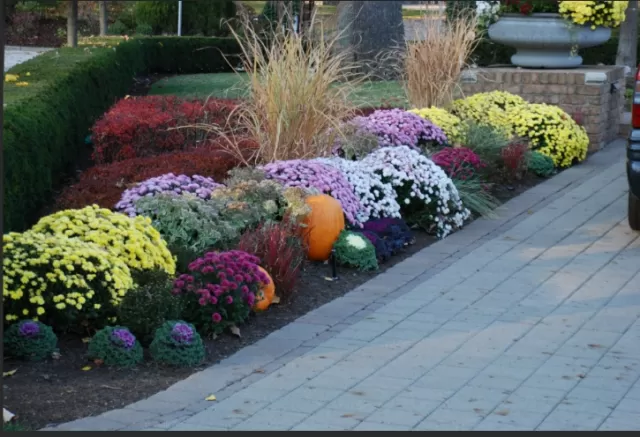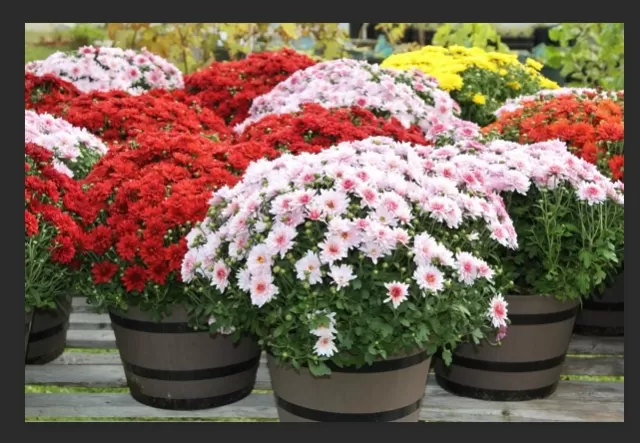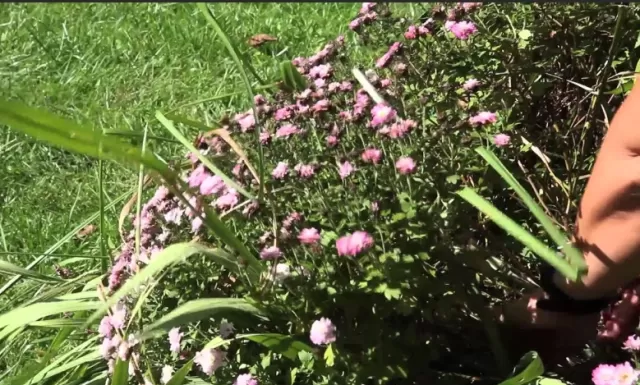Planting and Caring Tips for Autumn’s Blooming Stars. As thoughts turn to autumn flowers, the iconic chrysanthemum, affectionately known as mums, undoubtedly takes center stage. Adorning porch steps, cascading from Hanging Baskets, and adorning flower beds, mums emerge as the unrivaled contributors of color and charm to the fall landscape. These resilient plants, capable of blooming as early as August, truly thrive during the more temperate months of September and October. Offering a captivating palette that spans from warm yellows and bronzed hues to regal purples and pristine whites, mums paint the autumn canvas with their diverse colors. With proper care, these floral wonders can bloom for an impressive 10 weeks, gracing the landscape with their vibrant presence. Moreover, mums, true to their perennial nature, have the potential to return year after year, perpetuating the seasonal symphony of colors with each passing autumn.
Distinguishing Garden Mums from Florist Mums: A Guide for Selective Planting

When it comes to mums, understanding the distinction between garden mums and florist mums is key to making informed decisions about their cultivation.
Justin Hancock, horticulturist for Costa Farms, sheds light on the essential differences between these two categories.
Garden mums, derived from winter-hardy species, possess the remarkable ability to return year after year if planted in suitable conditions.
On the other hand, florist mums are not specifically bred for perennial resilience and are best treated as short-term annuals.
For those aiming to incorporate mums into their garden as perennials, the choice between garden mums and florist mums becomes pivotal.
Hancock suggests scrutinizing the plant tag, paying special attention to the hardiness information. Garden mums typically boast hardiness to USDA zones 5 to 9, making them resilient choices for persistent seasonal beauty.
Whether you opt for the enduring charm of garden mums or the temporary allure of florist mums, your selection will influence the longevity and sustainability of these vibrant additions to your outdoor space.
Planting Garden Mums for Lasting Fall Beauty: A Step-by-Step Guide
Elevate your fall landscape with a burst of vibrant color by planting garden mums, and follow these simple steps recommended by Tom Morris, the director of public gardens and landscapes for the Pennsylvania Horticultural Society:.
Plan for Impactful Planting: For maximum visual impact, arrange your mums in large swaths of similar colors, leaving just a small gap between the edges of the plants.
This not only adds visual interest to each plant but also prevents leaf rot by allowing airflow and minimizing trapped moisture.
Check Soil Moisture: Before planting, assess the moisture level around the roots of your mum.
If the soil is dry, soak the bottom of the pot in water for at least five minutes or until the soil becomes uniformly moist to the touch.
Select a Sunny, Well-Drained Location: Choose a location in your garden that receives ample sunlight and offers well-drained soil for optimal growth.
Prepare the Mum for Planting: Remove the mum from its container and gently tease the roots by hand to prevent tangling.
This encourages healthy root development.
Plant at the Right Depth: Dig a hole in the ground and position your mum at the same height it was in the container or slightly deeper.
This facilitates proper root growth.
Backfill and Water: Fill the hole with soil, ensuring that the mum is securely in place.
Water the newly planted mum thoroughly to promote immediate hydration.
Mulch for Moisture Retention: Apply well-composted mulch around the base of the plant, taking care not to place it against the plant’s base or cover the lower leaves.
This mulch aids in moisture retention, contributing to the overall health of the mum.
By following these steps, you’ll establish a robust foundation for your garden mums, ensuring a breathtaking display of fall colors year after year.
Caring for Mums: A Seasonal Guide for Blooming Success

Unlock the full potential of your fall garden by mastering the art of caring for mums.
Follow these essential guidelines to ensure a season-long display of vibrant blooms:.
Sunlight Requirements:.
Provide mums with at least six hours of direct sunlight.
In hot, dry regions, consider offering some shade during the hottest afternoon hours to prolong the longevity of the blooms.
While mums can technically be planted in shaded gardens, they won’t produce as many blooms and may become more susceptible to pests and diseases without sufficient sunlight, as advised by Hancock.
Watering Routine:.
Potted mums should be watered when the top half of the soil becomes dry.
Avoid overwatering, as excessively wet soil can lead to root suffocation, death, and rot.
For mums planted in the ground, water when the top few inches of soil start to dry.
Established mums can tolerate some drying of the soil before showing signs of distress.
Well-Draining Soil:.
Ensure mums are planted in a well-draining mix to prevent waterlogging.
In containers, use any potting mix designed for container plants. In garden beds, opt for soil rich in organic matter, although sandy or silty soils are generally acceptable.
Fertilization Practices:.
If using mums as seasonal potted plants, destined for compost after blooming, fertilization may not be necessary.
For landscape-grown mums in less-than-ideal soil, apply a general-purpose fertilizer in spring as they begin to grow.
Temperature Preferences:.
Mums thrive in temperatures ranging from 60 to 75 degrees Fahrenheit, preferably with higher humidity.
The fall season, characterized by warm days and cool nights, provides an ideal climate for mums, creating dew that helps keep the plants moist.
By adhering to these care instructions, you’ll set the stage for a spectacular show of mum blossoms, ensuring a vibrant and thriving addition to your fall garden.
Pruning Mums for Perennial Prosperity: A Seasonal Approach

Master the art of pruning mums to promote perennial vitality and a bounty of blooms.
Follow these seasonal guidelines for optimal results:.
Fall Pruning (After Blooming):.
Timing: For mums grown as perennials, wait until after they finish blooming in the fall, and the foliage is completely dormant.
Procedure: Trim the dead stems back to just above the ground level.
Consideration for Northern Gardens: Northern gardeners can leave the dead stems intact to provide insulation for the roots during severe winter cold, as suggested by Morris.
Spring Pruning (Before Growth):.
Timing: When the plants emerge in the spring and initiate growth, prune them back no later than July to ensure blooms in early fall.
Cutting Back: Trim the plants to about 12 inches tall.
Fertilization: Provide a dose of a well-balanced water-soluble fertilizer, such as 10-10-10, to stimulate robust growth.
Fall Pruning (If Needed):.
Timing: If the flowers have faded, and freezing temperatures are still a few weeks away, a light trim to stimulate new growth may be done in the fall, according to Hancock.
Note on Plant Patents:.
Patented Varieties: Some newer mum varieties are under patent protection.
Propagating mums with a plant patent is typically considered unlawful. Ensure compliance with patent regulations when handling patented mum varieties.
By adhering to these pruning practices throughout the seasons, you’ll nurture your mums to thrive as resilient perennials, gracing your garden with a continuous display of stunning blooms.
*The information is for reference only.